Two tiny towns on opposite sides of the Atlantic Ocean are bound together through the history of Irish emigration.
In the latter half of the 19th century, a trail west was established from St. Mullins, Co. Carlow, becoming well worn as family after family emigrated and found themselves in the frontier land of the United States.
This post has grown and grown, so here’s an index to the topics below:
- First stop: Bennington, Vermont
- Laurence Shaughnessy (b. 1808, St. Mullins)
- Edward Morrissey
- James Kavanagh
- Patrick Brennan
- Next stop: Elkhart, Illinois
- Last stop: Tecumseh, Nebraska
- Unsolved mysteries – 2023
Tecumseh, Nebraska is the county seat of Johnson County, and it is here that the vast majority of emigrants from St. Mullins seeking better fortune ended up. Today the population of Tecumseh is about 1800 people, much the same as it was 100 years ago.
So how did it come to be that so many from St. Mullins ended up in Tecumseh? Perhaps we can find out by digging deeper. In the late 1840’s, three men from St. Mullins made for the US, and having sailed to New York, found new homes in the small town of Bennington, Vermont. Their families – Shaughnessy, Morrissey, and Kavanagh’s, would follow them out there in the 1850’s. From there, most of them moved on to another tiny town – Elkhart, Illinois – in the 1860’s, and from there to Tecumseh, Nebraska.
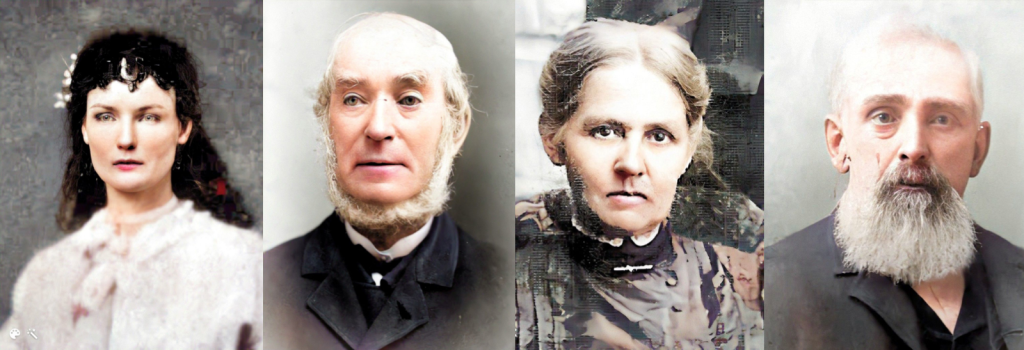
So who are these four people staring back at us from the 19th century? We’ll meet them and their stories further down, but from left to right:
- Ellen Taggart (b. 1853), who married Lawrence Murphy in Tecumseh
- Ned Morrissey (b. 1819), from St. Mullins.
- Bridget Gould , who married Ned’s son Lawrence.
- Thomas Brennan, born in Elkhart, son of Patrick Brennan from St. Mullins
First stop: Bennington, Vermont
For a number of St. Mullins emigrants, their first destination in the US was Bennington, Vermont.
On Jan 6, 1853, three St. Mullins men made their US Naturalisation here: Laurence Shaughnessy, Edward Morrissey, and James Kavanagh.

Vermont, U.S., State and Federal Naturalization Records, 1790-1954. Source >
Laurence Shaughnessy
Laurence Shaughnessy, born 1808 in St. Mullins, married Ellen McNamara (b. 1807 in Waterford) in 1838 (possibly at Graigenamanagh). The Shaughnessy family is from Drummond, St. Mullins. From Ellen’s family history >: “The potato famine in Ireland in the 1840’s was a big factor in the immigration of millions of Irish to the USA. Family history says that the Shaughnessy family was among the immigrants. The family came from County Carlow, Ireland. I believe that Lawrence came to the USA in 1849, probably aboard the ship Lady Constance, ahead of the rest of the family. Wife Ellen, with children Edward and Annie came in 1850 aboard the ship Nat. Kimbell. The threee older sons, Simon, Patrick and Michael arrived in 1851 on the ship Washington accompanied by a Mary Shaughnessy age 30….don’t know the relationship. According to obituaries of sons, the family settled in Bennington, VT where they lived for about seven years….two sons, John and Lawrence were born there. I do not know what kind of work Lawrence did in Vermont. They then moved to Logan County, Illinois where they are found in the 1860 census….occupation listed as farmer. Youngest daughter, Margaret was born there. Ellen died in Illinois. The three oldest sons were all married in Illinois. In 1870 Lawrence and most of the rest of the family had moved to Tecumseh, Johnson County, Nebraska. The 1870 census shows that Lawrence, age 63, (out of employment) along with daughter Margaret and sons Lawrence and John, living in the household of his oldest son Simon who owned the farm. From Grandma Ellen ‘Nellie’ Shaughnessy Frey’s memoirs states that Ellen McNamara Shaughnessy went out into a snow storm to help a neighbor, later coming down with pnemonia, and died.” Children:
- Simon Shaughnessy b. 6 Dec 1838 [>] St. Mullins m. Anna Kavanagh (below)
- Michael Shaughnessy b. 2 May 1840 St. Mullins m. Catherine Kavanagh (below). Michael served during the Civil War February 18, 1864-July 9, 1865 in Company A 7th Illinois Infantry. Catherine and Michael had 13 children in Tecumseh.
- Edward Shaughnessy bapt. 21 Jul 1842 St. Mullins [>]
- Patrick Shaughnessy bapt. 15 Dec 1843 St. Mullins
- Anna Shaughnessy b. 30 Nov 1845 St. Mullins m. Mattthew Brennan 24 Nov 1870 at Elkart, IL. Matthew son of Patrick Brennan and Ann Burns.
- Lawrence Shaughnessy b. 12 Dec 1850 St. Mullins
- John Shaughnessy b. 14 May 1855 Bennington m. Katherine Nestor at Tecumseh
- Margaret Shaughnessy b. Logan Co. IL. 1860
In tracing the Shaughnessy family of St. Mullins further back, in the period after 1800, and although the parish registers have gap years, there are only three Shaugnessy parents noted in the baptism records for 1800-1843. [>]
– Simon Shaughnessy and Margaret (Peg) Doyle (births 1802-1808)
– Patrick Shaughnessy and Mary (births 1822-1836)
– Lawrence Shaughnessy and Ellen McNamara (births 1838-1843) (above couple)
Althought Lawrence’s baptism record is not present (missing years) – since his first child was Simon, it seems likely his father was Simon Shaughnessy [Ancestry >] and therefore mother Margaret Doyle.
Edward Morrissey
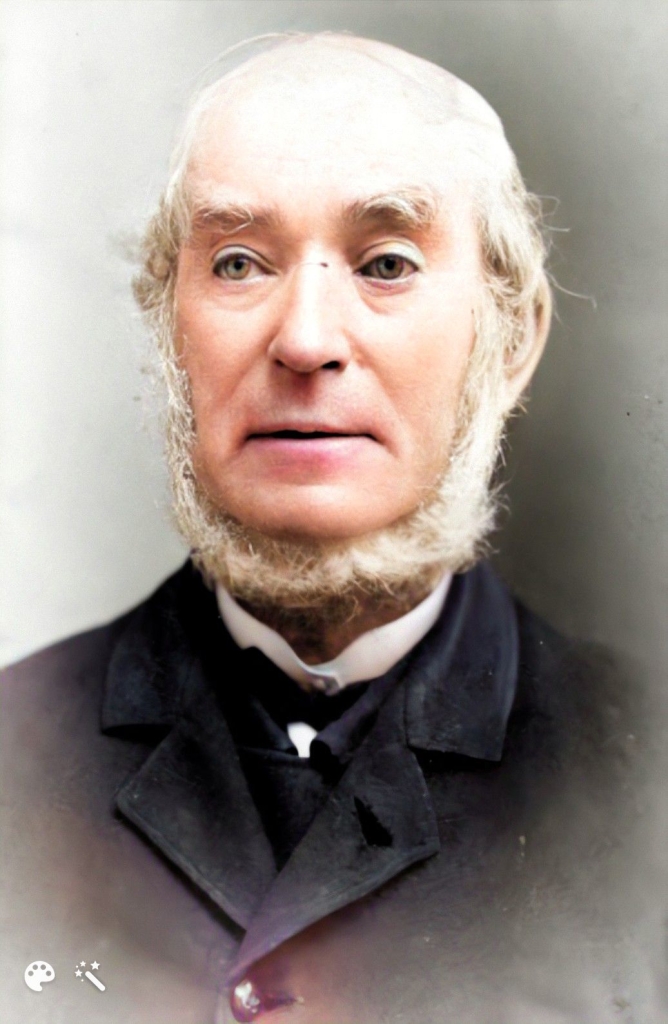
Edward Morrissey (known as Ned) was born in St. Mullins in 1817 or 1818. He married Mary Murphy, born Feb 24, 1819 (likely at St. Mullins, but need marriage cert to confirm). Edward came to the US in 1849, and settled first in Bennington, Vermont along with Laurence Shaughnessy and James Kavanagh. His marriage to Mary Murphy was in Bennington in 1853. In 1857 the family moved west to Elkhart, IL, and in 1868 moved further west to Johnson Co., NE. There they had 5 children including Lawrence Morrissey. [source: Obit. Edward Morrissey, Tecumseh Chieftain, 19 Mar 1904 >]
Children of Edward and Mary:
- Owen Jerome Morrissey b. Bennington 15 Oct 1853. Married Emma Faucett. Died in a house fire in Oklahoma in 1931. From his obit: “At the age of two years he with his parents, immigrated west to Elkhart, Illinois where they lived until 1868. They then moved to Johnson County, Nebraska near Tecumseh. Where he grew to manhood. While here he became a member of the Catholic Church and remained true unto his faith. In 1880 he went to the State of Washington where he met and was united in marriage to Miss Emma Faucett, at Tacoma, Washington, November 15, 1899. To this union were born two sons Edward L. and John. In the year 1906 Mr. Morrissey with his family moved to Minco, Oklahoma and here they have resided.”
- Lawrence Morrissey m. Bridget Gould.
- James Henry Morrissey, b. Bennington 9 Nov 1858. Married Margaret Nelson in Tecumseh 1886, moved to Washington state in 1891.
James Kavanagh
James D. Kavanagh married Kate Morrissey (a sister of Edward Morrissey TBC) in St. Mullins 28 Jul 1839, then emigrated to the US – first to Albany/ Bennington, and then onwards to Middletown, Illinois. James was born 24 Feb 1814 in St. Mullins, Kate c. 1813 (per US Census 1860) Their children were:
- Brian Kavanagh b. 2 Feb 1840. Married Catherine Joyce 25 Aug 1869 in Lincoln, IL. Died in Crab Orchard, Nebraska. Their daughter Mary married Pierce J. Murphy, son of James Joseph Murphy & Eleanor Kiely.
- John Kavanagh b. 1840/41. Married Mary Glynn (from Co. Clare >) at Elkhart, IL 1863. Died Tecumseh 1933. (see expanded bio below)
- Mary Ann Kavanagh b. 17 Mar 1843. Obit: Came at age of 5 (1848/9). Lived in Albany, NY for 7 years, then to Elkart (1855/6). Married 1861 Elkhart, IL to Thomas Brennan. Stayed in Elkhart, IL for life.
- Anastasia (Anna) Kavanagh b. 25 Dec 1844. Married Simon Shaughnessey (from St. Mullins, above) 1862 in Logan, IL.
- Catherine Kavanagh b. 15 Aug 1848, St. Mullins. Married Michael Shaughnessey (above)
- Bridget Kavanagh born 17 Mar 1851 in St. Mullins. Married …
- Charles Kavanagh born 29 Sep 1852 in Bennington (or Illinois per 1860 Census)
- Johanna Kavanagh born c. 1853 in Illinois
Patrick Brennan
Patrick Brennan was another St. Mullins native that emigrated to the US. He was born in St. Mullins (Kilmison, Ballymurphy), and married Ann Burns (Byrne) in 1827 in St. Mullins [related to John Burns?]. Ann’s parents were Matthew Byrne and Bridget Corcoran [>].
Patrick Brennan decided to bring his family to America to avoid starvation during the famine in Ireland. They missed their original departure on a steamer out of Liverpool due to a death in the family. It was decided that some of the women would stay behind to settle the deceased’s estate while Patrick and some of the men would go to the US to earn money for the rest of the children to come over. However, Patrick’s wife died of the fever before she could ever go to America. [Source: Margaret Walsh [>]].
The couple had five children:
- Thomas Brennan: Birth: 12 Mar 1833 in Kilmison (St. Mullins), Co. Carlow. Death: 18 April 1897 in Elkhart, Logan Co., IL. Thomas married Mary Ann Kavanagh (above). Thomas came to the US in 1850 at the age of 17, first working on farms in the New York state area for $5 a month during the summer months, and then attending school. He moved to Illinois around 1855, initially farming, and then getting into the grocery business. He amassed a small fortune, leaving $100,000 in his will. He died in Elkhart, IL [>]. Thomas Brennan arrived in the US on June 9, 1850 (obit).
- Bridget Brennan: Birth: 2 Feb 1832 in St. Mullins. Death: 14 Mar 1894 in Rantoul,IL. Bridget married Patrick Henry Walsh (b. 1818 Co. Carlow) on 22 Nov 1851 at St. Johns Church,Schaghticoke,NY [>]. The ceremony was presided over by the Rev. W. Quigley, DD. Witnesses were Patrick Murphy and Rose Duggan. Their first child was Mary Walsh, born 3 Dec 1852 in Vermont. Patrick Walsh’s family came from Cooleyhune, Co. Carlow to the Hossick Falls area of NY/Vermont [close to Bennington] to Rantou, Il where they settled. [>]
- Sarah (Sally) Brennan: Birth: 10 May 1835 in St. Mullins. Death: in in Ivesdale, Champaign Co., IL. Sally married John White [>]
- Mathew Brennan: Birth: 1846 in St. Mullins. Death: 28 April 1910 in in USA. Matthew married Anna Shaughnessy (above)
- +1
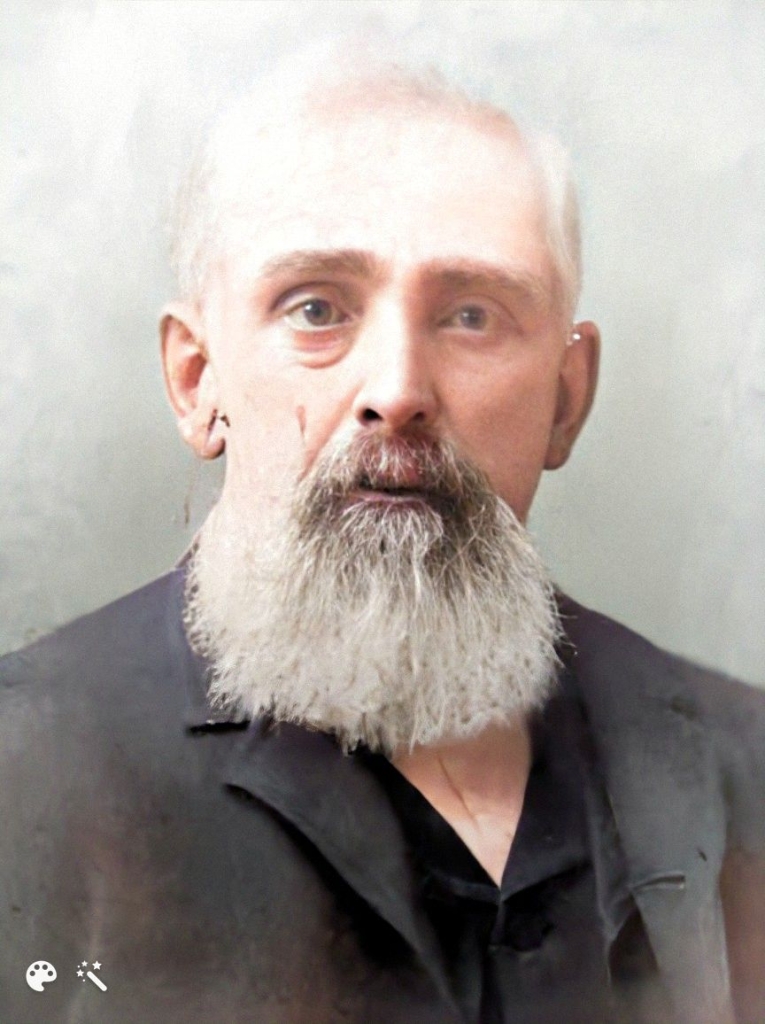


Next stop: Elkhart, Illinois
In the 1850’s most of the St. Mullins families in Bennington, VT move out west to Elkhart, Illinois. So far, it looks like Ned Morrissey was the first to come here.
Elkhart, though a tiny village in the 1850’s, has some significant history in its strong ties with Abraham Lincoln. Indeed, Thomas Brennan (St. Mullins, son of Patrick Brennan) is reputed to have worked for Lincoln.
The history of Elkhart tells “It is a well known fact that Lincoln was a frequent guest at Richard Latham’s “Kentucky House” in the grove. When Robert B. Latham and John D. Gillett of Elkhart with Virgil Hickox, director of the St. Alton and Chicago railroad, decided to found the town of Lincoln, Abraham Lincoln was their lawyer and after whom the town was named August 27, 1853.
It might be added that one of Mr. Lincoln’s last law cases was over an incident which happened at Elkhart. A few months before his election as President, he was a lawyer in the case of Louis, Alton & Chicago Railroad vs. Joseph A. Dalbey. Mr. Dalbey lived a few miles east of Elkhart on the farm now owned by William Bates. The trouble occured over a train ride from Elkhart to Lincoln. Mr. Dalbey was put off the train and in doing so he received bodily injury for which he sued the railroad. The case was taken by Lincoln to the Supreme Court of Illinois. Lincoln paid his last visit to Elkhart on May 3, 1865 when his funeral train stopped at 7:30 at Elkhart for the engine to take on water at the watertank. A huge arch of evergreens draped with flags in mourning was built over the track. It was topped by an evergreen cross which bore the motto “Ours the Cross, Thine the Crown”.”
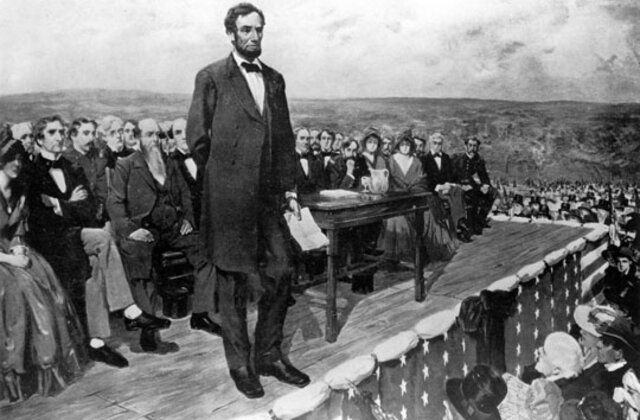
Equally famous in Elkhart was Thomas Brennan’s grocery store, depicted here in a cartoon from the close of the 19th century. Thomas Brennan was the eldest son of Patrick Brennan from St. Mullins (more above).

From The village of Elkhart City, Elkhart, Illinois, centennial history, 1855-1955 [>]
The history of Elkart offers this biography of Thomas Brennan. “Mr. Thomas Brennan was born in County Carlow, Ireland, on March 12, 1833. He came to America at the age of seventeen. He worked on a farm in New York for two years at $5 per month during the summer months and for his board during the winter, going to school one month in each year. After several years he left New York and working at various jobs, he traveled westward. Arriving in Springfield, March 4, 1854, he worked as a drayman, mail carrier, bus driver, liveryman, and hotel butler. He also worked for the immortal Abraham Lincoln, little dreaming of the brilliant future awaiting his employer. His first farming was done in the vicinity of Williamsville, during the wet season of 1858. He planted 25 acres of corn with a hoe, which he sold the following season for seventy cents a bushel. After his corn crop was laid by he ran a threshing machine. On September 29, 1861, he was married to Mary Kavanaugh in Elkhart. He was the father of thirteen children, two dying in infancy. His children included Patrick, Mrs. Gue Thompson, Matthew, Mrs. Thomas Gleason, Sadie, Mrs. Char- les W. Lee, Thomas A., Edward, Charles, John, and Bryan. All of his children grew to maturity in the vicinity of Elkhart. Surviving are Mrs. Thomas Gleason of Broadwell and John of Elkhart. After locating in Elkhart Thomas Brennan opened a grocery and general merchandise store which he operated in the same location until his death in 1892. After the death of his father, Patrick Brennan continued with the store until he retired in 1923. The store was sold to the present owner, Ralph Lanterman. Matthew was associated with the business for a short while.”
Records of population in Elkhart show that in 1860 there were 120 inhabitants; in 1870 there 378; in 1890 there were 387 and the census of 1900 showed that there were 553.
A Methodist society was organized at Elkhart Grove in the early thirties by Rev. Samuel H. Martin, a well known pioneer preacher, but not until 1863 was there a church building of this denomination erected in the village of Elkhart. The trustees at that time were: Wm. B. Bock, Joseph A. Dalbey, David G. Evans, Thomas Nolan [connected?], and Godfrey H. Guyer. The church society was incorporated June 15, 1873.
Elkart had a significant Irish contingent. The History of Elkhart (1955) lists some families that lived here in the 1800’s.
James E. Murphy came from Ireland in 1880 when he was seventeen. He attended school at Maple Grove in the winter and worked during the summer. He married Bridget Hegarty, who had come to Elkhart from Ireland in 1900. They had three children: Emmett, Dorothy, and Mildred. Of the many families who came from Ireland and settled in Elkhart, Patrick Walsh is the only one still living here. He was born in Ireland and came to Elkhart in 1890 at the age of nineteen. He married Bridget Tierney, also from Ireland, in 1898. They were the parents of the following children: Michael Stephen, Leo, Mary, Catherine, and Cecilia.
The land map of 1873 shows 2 properties owned by the Burns family.
The 1860 Census of Elkhart has 23 pages. [>] Present in Elkhart for this Census are:
- Ann Kavanagh(17), John Cavanagh (19), Brian Kavanagh (21) all working on the farm of Thomas Curphey from the Isle of Man. These would be the children of James Kavanagh and Kate Morrissey.
- At the next farm, workers include Fogartys, Doyles, Flanagans, Sullivans, and Lawlers, all born in Ireland.
- John Murphy, 19, born Ireland, working on the farm of James Deniston.
- Mary Kavanagh (19) is on the farm of John Gillett as a domestic servant.
- Mary and Pat Sutton, from Ireland
- The Irish in Elkhart number about 50, almost all working as farm hands and domestic servants.
- The Kavanagh’s are here, and some Burns, but no Morrisseys.
The 1860 Census of Middletown shows the Kavanaghs (‘Cavners’) living in Middletown [>], about 8 miles northwest of Elkhart. Also James Murphy. Details:
- James and Kate Kavanagh, with children Kate (14), Bridget (11), Charles (7), and Johanna (6). Their other children are listed in the Elkhart Census, living on the farm of Thomas Curphey.
- James and Mary (nee Daly) Murphy, with children Thomas (2) and Johanna (1). James is a farmer, net worth $800, born Ireland, aged 25 (b. 1835). Mary aged 21 (> b. 1839). Living very close to Kavanagh’s. [Who is this couple? – looks like this James Murphy is from Wexford [>]. Children ended up in Kansas. Johanna later married a John Burns, son of John Burns and Catherine Maher. James died in Cherokee, Kansas.]
- Lawrence and Ellen Shaughnessy, with children Simon (20), Mike, Annie, Larry, John and Margaret. Lawrence farmer, net worth $400 [>]
- No trace of Ned Morrissey. Maybe already in Tecumseh?
- Ned’s daughter Johanna Agnes Morrissey born 17 Oct 1860 in Elkhart. Census Day was June 1, 1860.
The 1870 Census of Elkhart Township has the following Irish people [>]:
- Thomas Brennan & Mary Ann Kavanagh with 5 children
- Patrick & Lucy O’Brien, Patrick & Mary O’Brien
- Patrick Shaughnessy (25), born Ireland, working on the farm of Walter B Lawrence
- Michael Brennan & wife Margaret, 3 children.
- Ellen McCarthy working on the farm of John Gillett
- Timothy Murphy (30), born Ireland, working on farm of Barnchey McCue
- Thomas Murphy (31), John Murphy (25), both born Ireland, working on farm of John Hall
- John Ryan and Thomas Glenn, working on farm of Thomas Curphey
- John Kavanagh (35) and wife Bridget (33), both born Ireland, with children Patrick (born Ireland), Margaret (all others born Illinois), John, Thomas and James. [>]
John Burns & Mary Murphy
John Burns (originally Byrne) married Mary Murphy, daughter of Pierce Murphy and Ann Doran, in Lincoln, Logan, IL in 1868. Mary was born July 20, 1839. John was baptised 5 Jan 1835 in St. Mullins (Dranagh townland), his parents were Michael Byrne and Catherine Murphy [parents unknown]. The couple emigrated to the US in 1868, on the ship Virginia, the trip taking three weeks. According to her obituary, the ship sank on the return voyage. They moved to Tecumseh in 1869 [source: obit >]. The question is, when they arrived in the US, and went to the Elkhart area, who did they stay with? Could be Middletown also.
Timeline Elkart/Middeltown
1855 Patrick Brennan & Family moved from Vermont to Springfield, IL, and sometime before the Civil War, moved to Elkhart to farm.
1857 Ned Morrissey and Mary Murphy arrive Elkart from Bennington, Vermont [s: obit]. Stayed here until 1868 [s: obit son Owen]
1857 John Flavin is born in Elkhart to James and Bridget Flavin.
18xx James Kavanagh and Kate Morrissey arrive Middletown (near Elkhart) from Bennington.
1861 Mary Ann Kavanagh marries Thomas Brennan in Elkhart. The couple remain there for life.
1862 Anna Kavanagh marries Simon Shaughnessy in Logan, IL (poss. Elkhart, which is in Logan Co.)
1868 Mary Murphy (daughter of Pierce M. & Ann Dolan) married John Burns in Lincoln, Logan, Illinois, in 1868. Later moved to Tecumseh.
1869 Michael Shaugnessy marries Rose Ann Galligan (Gallagher?) in Elkhart. 1870 Mary Shaugnessy is born, first child of Michael Shaugnessy and Rose Galligan. Further children follow inc. Michael Ignatius Shaugnessy born 1875. Rosa born Ohio, her parents in Ireland. This Michael Shaugnessy is born in Ireland, parents unknown.
Margaret Flavin was born in Elkhart on July 19, 1867, to James and Bridget (Finn) Flavin. She later moved with her parents to Tecumseh, Nebrasksa, where she died on August 19, 1952. > She never married. Her siblings include John Flavin >, born October 8, 1857 in Elkhart >. Her father James Flavin was born in Ireland in 1834, and died in 1915 in Tecumseh >. Somehow the Flavin’s were also part of the Elkhart-Tecumseh trail. In the 1880 Nebraska Census, the Flavins lived next door to James and Ellen Murphy. > The move from Elkhart appears to have been ca. 1867 – likely with the Murphy’s that made the same trip.
Last stop: Tecumseh, Nebraska
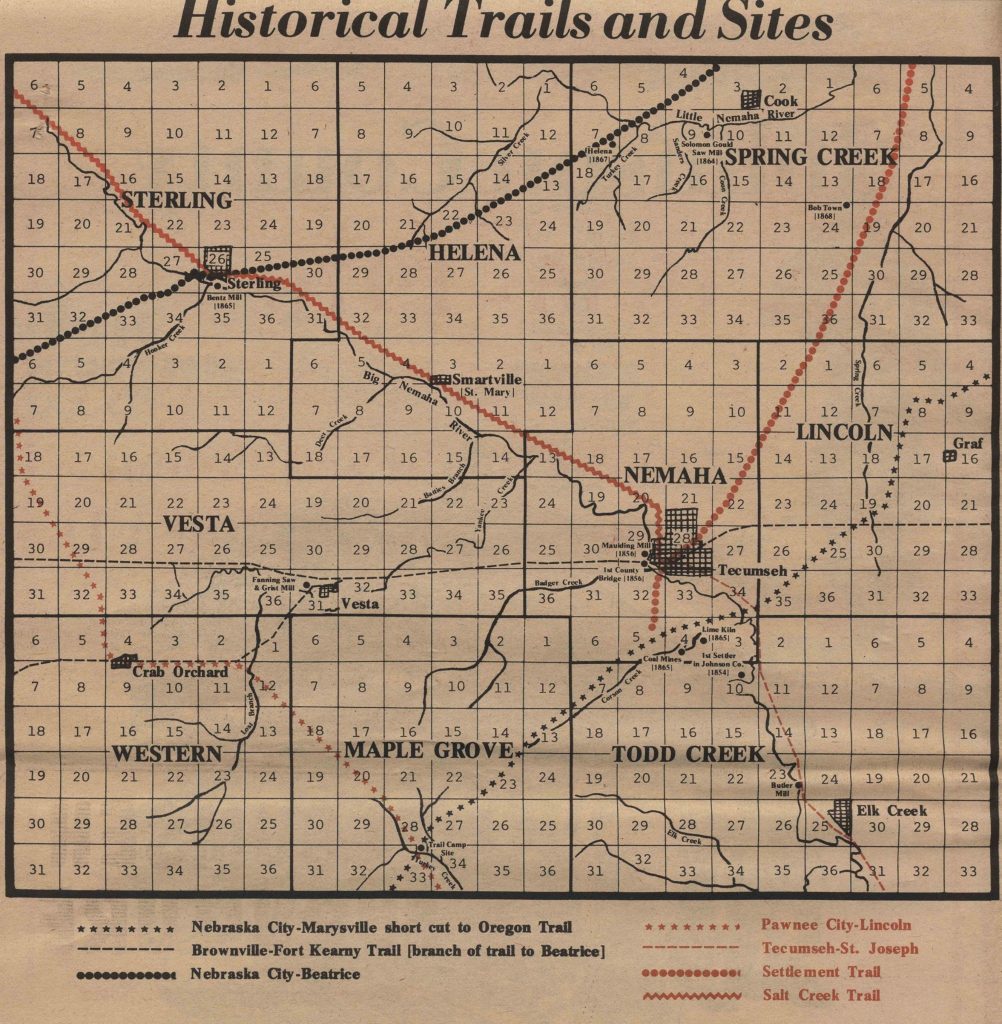
It is apparent from the history of Johnson Co., written in 1881 [>], that the St. Mullins expatriates were amongst the very first settlers of the Tecumseh area. “In the summer of 1856, a half dozen settlers had gathered together in a nucleus, forming a hamlet, later known as Tecumseh; while one or two other towns–known vaguely by name, but possessing no local habitation–became vigorous aspirants for the possibilities in the way of future greatness. Of such a character were the quasi settlements known as Centreville, Butler, Kingston and Lexington–places which signally failed to materialize when the county became more extensively settled and the era of speculation began to pass away. The first symptoms of any general settlement became apparent along the valleys of the Great Nemaha and up Yankee Creek, which seemed to offer especial attractions to the earlycomers … The first birth of which there is any record in Johnson County, was that of James Price, son of Ansford Price, occurring in August, 1856. The first person to die was Mrs. B. S. Radley, who was interred in the cemetery at Tecumseh in the fall of that year.”
The history continues …
“The winter of 1856-57 brought its full share of misery for the unfortunate settlers in Johnson County. Spells of bitterly cold weather, and almost insurmountable drifts of snow, made life in the rude and insufficient dug-outs or log cabins, hastily constructed for shelter, a matter of the most serious moment. Nothing had been raised the previous summer, to speak of, for the support of the needy settlers through an inclement winter. Provisions of all kinds ran out, and the problem of life was rendered still more intricate by the apparent impossibility of reaching any base of supplies. The nearest market was at Brownville, forty miles away. Between them and that place lay a trackless waste of prairie, deep with unbroken snows. No other alternative, however, existed. Bidding their families adieu, the sturdy frontiersmen manfully struck out in the face of these dangers, and after a lapse of a week, or even longer, were able to reach their homes again with a supply of the most pressing necessities.
It was in the latter part of this winter, as will be seen further along, that Johnson County was organized. Early in the spring of 1857, the first roads through the county were located, there being up to that time no trace of such improvements. The first thoroughfare thus opened was an east and west road through the middle of the county, running from Brownville west to Fort Kearney. Shortly after the Nebraska City and Fort Kearney road was laid out, also passing through the northern portion of the county.”
Timeline for arrivals – Tecumseh
1848 James Murphy and Catherine Ahern are in Freeport, IL. Son Lawrence born there.
1849 Edward Morrissey emigrates to the US. Marries Mary Murphy in 1853 in Vermont.
18xx John Kavanagh arrives. Died Tecumseh.
1856 James Murphy and Catherine Ahern move to Tecumseh from Waterloo, Iowa with son Lawrence Murphy (then aged 3). James died Tecumseh 1888, Catherine Ahern died Tecumseh 1895.
1857 Edward Morrissey (& Mary Murphy) moves from Vermont to Elkhart, IL.
1860 US Census [>]. In Johnson Co.: James & Catherine Murphy. In Nebraska City: Norah Murphy.
1862 Lawrence Murphy (son of James M. & Catherine Ahern) moves to Iowa (agd 14).
1866 Lawrence Murphy (son of Pierce M. & Ann Doran) emigrates from Ireland in 1866 at the age of 22 together with James Murphy, his brother, and his friend Johnny Burns.
1867 James Joseph Murphy & Eleanor Kiely move to Tecumseh.
1867 Lawrence Murphy (son of Pierce M. & Ann Dolan) comes to Nebraska. He marries Ellen Taggart in Tecumseh in 1875. They had 12 children. He remains in Tecumseh. Died Dec 3, 1922.
1868 Ned Morrissey and Mary Murphy arrive from Elkhart, IL. He buys 160 acres for $14 on May 28, 1868 (see below).
1868 Mary Murphy (daughter of Pierce M. & Ann Dolan) emigrates from Ireland, aged 28. She married John Burns (originally John Byrne) in Logan, Illinois, in 1868, and had 8 children. They lived in Nemaha. She died Oct 24, 1930.
1868 Edward Morrissey and Mary Murphy move from Elkhart, IL to Tecumseh.
1869 John Burns and Mary Murphy move from Illinois to Tecumseh.
18xx Lawrence Shaughnessy arrives. The 1870 census shows that Lawrence, age 63, (out of employment) along with daughter Margaret and sons Lawrence and John, living in the household of his oldest son Simon who owned the farm
1878 Lawrence Murphy (son of James M. and Catherine Ahern) and Mary Craney move to Tecumseh (St. Mary’s area).
1881 Michael Shaugnessy and Rose Galligan move from Elkhart, IL to Tecumseh with children, inc. son Martin Ignatius Shaugnessy.
Early St. Mullins owned Homesteads in Tecumseh
The 1862 Homestead Act offered extremely cheap land to those moving west to the frontier states. For the emigrants of St. Mullins, it was the first time ever that any of their family owned their own homes on their own land. Coming from the despair of famine-ravaged Ireland, this was no small cause for pride and celebration.
A land map from 1900 shows the names of the families that settled here.

Each quarter of a box is 160 acres, the standard homestead size from the Homestead Act of 1862.
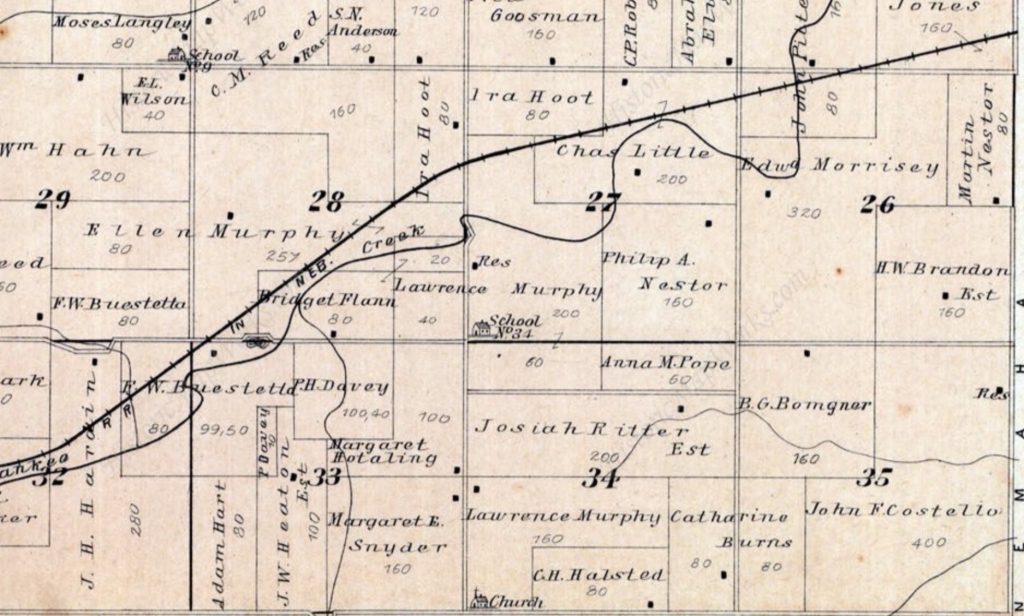
And just to the south …

These maps [>] of the Vesta and Maple Grove Precincts, Johnson Co., shows the lay of the land in 1900, about 30 years after the first St. Mullins arrivals in the 1806’s. Many St. Mullins families can be seen living close to each other here. In the directory, Lawrence Murphy is listed at Section 27, seen above (Ref S27, T5, R10, Farmer and Stockman). He has 200 acres in Section 27, and another 40 next door in Section 28. The largest holder in Section 28 is Ellen Murphy (most likely ‘Aunt Ellen’ x James Murphy). In Section 26 we can see Edward (Ned) Morrissey, with 320 acres.
Note: Very interesting that Ellen Murphy is here at 28 and 29. This land was originally assigned to a James Murphy in 1867 – might that indeed be James Joseph Murhpy? Also shown is a School (No.34) which is believed to have been built by Lawrence Murphy.
James Murphy – 1860, 1862
On Apr 2, 1860, James Murphy is given 160 acres at Township 5 Section 32 (right beside Vesta). [Patent >]. This is James Murphy of the “English Murphy’s”, married to Catherine Ahern. In 1860, the entire population of Johnson County was only 500 people. No other Murphy’s are known to have been here at this time. The “Sections” listed here correspond to the map above as well.
On Jul 3, 1860, James Murphy is given another 40 acres at Township 5 Section 32. [Patent >]. This assignment of land is interesting. This is Bounty Land, granted to “certain Officers and Soldiers who have been engaged in the Military Service of the United States”. It was originally issued in favor of “Margaret Leonard, widow of George Leonard, deceased, a Private in Captain Hines Company, 2nd Regiment Ohio Militia, March 1812″. Margaret Leonard passed the rights on to James Murphy.

Indeed, George Leonard served in the company of David Hines during the 1812 war, from Aug 23 – Sep 17, 1812. There is no mention of any Murphy or other Irish people in the same unit. Most likely, the Bounty Land grant was a form of currency, sold by Magaret Leonard at some point either directly to James Murphy or via others.
On Jul 3, 1860, James Murphy is also given 40 acres at Township 5 Section 29. [Patent >], again under Military Warrant. This was originally assigned to Henry & Elizabeth Ferrote. Captain Clarks Company Twelfth Regiment New York Militia.
On May 15, 1862, James Murphey (sic) is given 40 acres in Township 5 Section 29. [Patent >]
The farm that James Murphy and Catherine Ahern settled on in 1856 later passed to John Gould. [source Obit Lawrence Murphy].
Lawrence Murphy
[Unsure which Lawrence Murphy this is]Lawrence Murphy received land at Township 4, Sections 4 and 9 on 15 Jun 1867, and homestead papers on 12 Nov 1872 [>], for 160 acres. Listed as “a single man over 21 years”, and “a citizen of the US”. His papers in 1872 are signed by John Gould and James Murphy, having known him for 7 years. His house was “14×16 feet, one story high, a good comfortable dwelling”. By 1872 he had cultivated 35 acres of land, and planted 1 mile of hedge. [Doc 831, Section 4 and Section 9]



James Murphy (Snr) purchased 160 acres 5 Aug 1867. Homestead papers 4 Sep 1872. Head of family, has wife and six children. Affidavit signed by James Murphy Jr. and William Goold. [>]. Beatrice Land office, 5N10E.
Not clear which James Murphy this is. William Gould likely b. 1811, uncle of William Gould husband of Catherine Burns, dau. of John Burns and Mary Murphy (sister of Lawrence Murphy, our family).
– Cannot be James Murphy bro. of Lawrence (Pierce and Ann’s son), no children yet in 1872.
– Cannot be James Joseph Murphy – eldest child born 1862, so could not have purchased land in 1867. But could be another James Murphy, ie. not his child? Did JJ Murphy have 6 children in 1872? YES. This is confirmed James J. Murphy.
– Could be James Murphy (x Catherine Ahern)? 6 children in 1872 matches. No James Jnr though?

Compare to marriage:



James Murphy (Jnr) purchased land 27 May 1867. Papers 4 Sep 1872 (same day as James Snr). Single man aged over 21. His was signed by William Gould and James Murphy Snr. [>] Uncertain as to which Murphy’s these are.
Edward Morrissey purchased his land on May 18th, 1868, at Beatrice, Johnson Co. [>]. His affidavit was signed by Andrew Martin and Alexander Martin, who knew him for 7 years. In 1868 he had five children and his wife (Mary Murphy) living with him.
James Kavanagh purchased 160 acres in January 1869 at Beatrice, Johnson Co. [>], for $14. He built a log house, 16×17 feet, with two doors and four windows, “a good comfortable dwelling house”. He also built a stable, an outdoor cellar, set out 80 fruit trees, and planted upwards of 5000 forestry trees. The affidavit (required under the act) was signed by Martin Nestor and Edward Morrissey.

Mary A Murphy, widow of Robert Murphy, homestead papers 25 Jan 1878 [>]. Clay Co. Likely unrelated.
1880 Census [>]
Edward and Mary Morrissey, children Joanna (19), Patrick (16). Also living with them is John Shaughnessy (25), a farm labourer, born Illinois. [This would be the son of Lawrence Shaughnessy]
Bridget Gould-Morrissey’s story
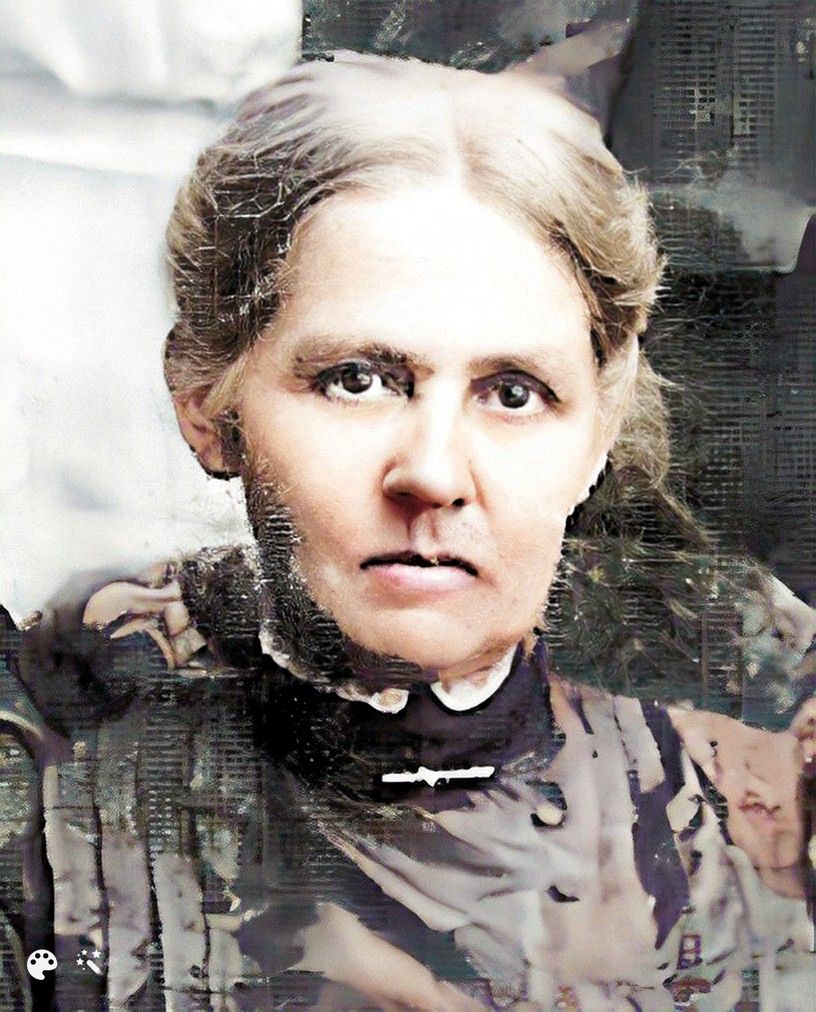
Bridget Gould married Ned Morrissey’s son Lawrence Morrissey. She was born in 1858 in Vesta, Nebraska, one of the first Irish children from families connected to us to be born in Tecumseh. In her memoirs she described the early Nebraska days. Source: [>]
Our food consisted principally of corn prepared in various ways and wild game until the coming of the hog. There were very few people that had bread made of wheat flour. The people raised sod corn and ground this into cornmealto make corn bread. Sugar was considered a luxury, and brown sugar was the only kind known at this time. Roasted rye answered as a substitute for coffee. We used a fireplace for heating and a dutch oven for cooking and baking and cut wood on the Lost Branch. Our clothing was extremely plain and home-made. Some settlers raised sheep to sell wool to other settlers. The wool was taken to St. Joseph (MO) and carded. The settlers’ wives usually weaved this wool into jeans or linsey to make dresses and clothing.
The old east and west wagon trail passed about 50 yards north of our cabin. This was the principle trail to the western frontiers and there was hardly a day that settlers did not pass our claim. Caravans of all descriptions and sizes trailed over the prairie from day to day. There were no white neighbors on Lost Branch but we had two neighbors when we moved to the Vesta Claim.
In the fall the Indians came from the northwest where they had spent the warmer months hunting. They made their fall camping ground near my father’s Vesta claim. The Indian men would come into father’s cabin and sit around the fireplace until the squaws had the tepees set up and the fires burning. The Otoe and Pawnee Indians wandered over this section of the country and were considered harmless. They would beg of the settlers and the settlers would trust them to some extent. Bands of Cheyenne Indians would sometimes come into this territory. They were treacherous and the settlers could not trust them.
I remember one time Father had gone to the field when two Indians walked into our cabin. They at once discovered his tobacco and started for it. Mother stepped in front of them but they pushed her aside and reached for the tobacco. Mother took the tobacco, cut off a little piece for each of them and they departed contented.
My father broke out the prairie with oxen. Sod corn was the principal crop raised by the settlers. This was planted with a spade-like implement and tended with a hoe. Around 1862 Father purchased a horse, one of the first in this community, and a hand corn planter. With the horse, the hand planter and the hoe, Father tended his crops. These implements were considered very modern at this time.
In 1863, Father raised more corn than needed. There was no market for the grain in this section of the country so he loaded two schooners with corn and with the aid of my 10-year old brother, Tom, started to Fort Kearney driving two yoke of oxen to each schooner. They carried enough provisions for the journey. At noon on the third day of the journey they stopped to let the oxen graze and rest. Brother Tom sat in the schooner braiding an oxen whip and father was sleeping in the shade of the schooner, when three Indians, painted in war colors, appeared. They demanded food and commenced kicking the grub box. This awakened father, who took an oxen whip and drove them away. They went about 40 yards and suddenly turned and came back. Father opened up the grub box and allowed them to take all the food.
After a week’s journey they reach Ft. Kearney. They received $1.00 per bushel for the corn. On the homeward journey, they were met by a government scout who warned them to turn back because the Indians had broken out and were killing white settlers. Father and Brother Tom continued homeward, arriving safely on a Saturday night. The next day a number of settler caravans lined the trail, coming from the west, hoping to cross the Missouri River before the Indians caught up with them. Practically all the settlers left this county at that time. At night our family would go to the Strong’s claim in order that we would be together if the Indians came. The men remained outside during the night to prevent a surprise by the Indians.
The Indians came east as far as Blue Springs, where they were stopped by the government soldiers. Father and Brother Tom, with a company of other men, went to help care for the dead and wounded. Two women were found with their heads buried in the mud. They had been scalped and had put their heads in the mud to soothe the pain and here they died. In another instance Father came to a cabin where a friend lived. He found his friend lying near a window shot in the head as he attempted to defend himself and property.”
The Early Years in Southern Nebraska taken from the writings of Bridget Goold Morrissey
Biographical Sketches
From Andreas’ history of the state of Nebraska [>]
JOHN KAVANAGH, farmer and stock raiser, Tecumseh P. O., was born in County Carlow, Ireland, in 1842, and came to America in 1850. In 1868 he came to Nebraska, and settled here in 1873, and has successfully followed his present vocation since. In 1863 he was married to Miss Mary Glynn, who was born in County Clare, Ireland. They have two sons and four daughters–James, Katie, Mary, Arthur, Eliza and Hannah. Mr. K. is one of the very active farmers of his locality. [Tecumseh]
WILLIAM TAGART, farmer and stock raiser, Section 26, P. O. Vesta, was born in Country Antrim, Ireland, and came to America in 1835, and settled in the Eastern States, where he remained till 1853, when he removed to Iowa, where he stayed four years, when he came here and has been actively connected with the present industry since. In 1857, he was married to Miss Sarah Pearson, who was born and reared in Pennsylvania. They have a family of four sons and six daughters, Robert, James, George, William, Mary, now Mrs. Thomas Tobia of Nemaha County; Ellen, now Mrs. Lawrence Murphy of Johnson County; Nancy, now Mrs. Bernard Minick of Nemaha County; Rose Ann, now Mrs. Charles Kavanagh of Johnson County; Catherine, now Mrs. James Higgins of Nemaha County, and Jane. Mr. Tagart has been prominently identified in connection with the pioneer element of this locality. [Vesta]
The Murphy’s of Tecumseh
There are a number of different Murphy families that took the trail from Ireland to Illinois and then Tecumseh. It’s not yet clear how they are all related.
The Ballyknock Murphys
The first is the family of Pierce Murphy and Ann Doran of Ballyknock, St. Mullins – their children Lawrence Murphy (1), James Murphy (2), Mary Murphy (3), and John Murphy (4) all ended up in or near Tecumseh, Nebraska. Pierce Murphy was the son of James Murphy and Mary Morrissey, and was born in Ballyknock, Co. Carlow, Ireland in 1806.
(1) Lawrence Murphy (b. 10 May 1844, Ballyknock) emigrated from Ireland in 1866 at the age of 22, together with his brother James Murphy and friend Johnny Burns. They went first to Illinois (likely to Elkart area). He came to Nebraska in 1867, homesteaded at Tecumseh, and married Ellen Taggart in Tecumseh in 1875. They had 12 children. He died Dec 3, 1922.
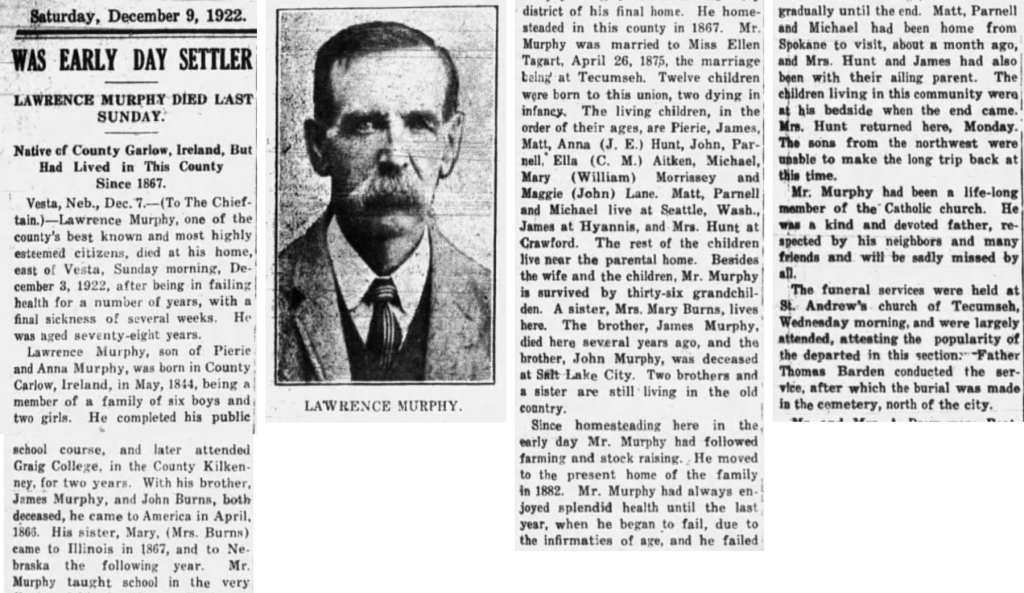

(2) James Murphy (bapt. 8 Nov 1837, Ballyknock) emigrated with brother Lawrence, married Mary Reddin from Donegal in 1882, and had 10 children in Tecumseh. He died, apparently from a heart attack, while mounting his horse on the way home from a neighbours house at 10am on Feb 27, 1906. James and Mary lived in Maple Grove, near Tecumseh, Nebraska.
(3) Mary Murphy (bapt. 14 Jul 1839, Ballyknock) emigrated in 1868 at the age of 28, married John Burns (originally John Byrne) in Logan, Illinois, in 1868, and had 8 children. They lived in Nemaha, Nebraska. After John passed away, Mary lived with her son and family, who farmed in Nemaha. She died Oct 24, 1930 at the age of 91.
Her obituary informs us that she came to the US in 1868 on the ship “Virginia”, the voyage taking 20 days. She married John in 1868 and the following year moved to Johnson Co., Nebraska, taking the trip in an ’emigrant wagon’. They first lived on a farm near Vesta, on what became known as the “Burns home”. By 1930, all her six brothers had passed away, but her sister Elizabeth Noland is ‘still living in the native land’. Her brothers James and Lawrence were also early settlers in Nebraska, and her brother John Murphy died in Salt Lake City.

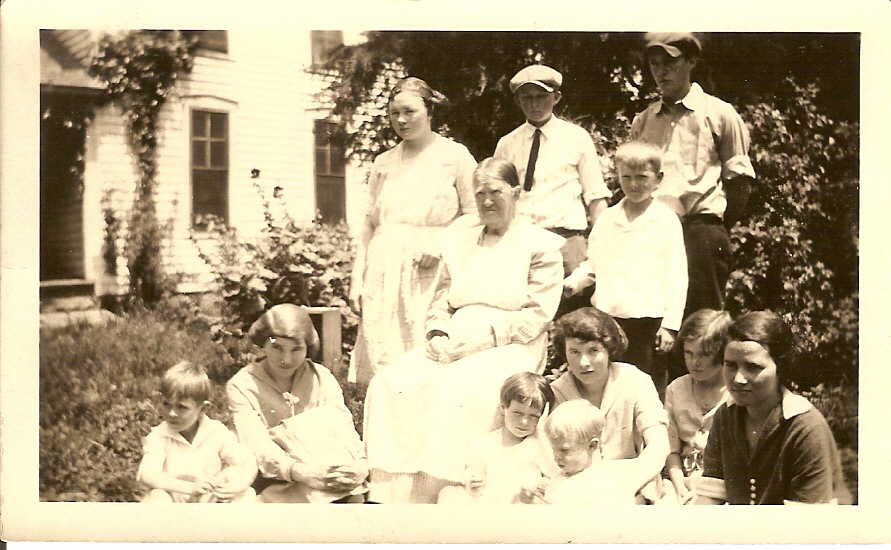
(4) John Murphy – the man “missing for years” – turned up dead in Salt Lake City on March 2nd, 1920. He had been working as a miner at the Bingham Canyon Mine near Salt Lake. He had left Tecumseh around 1890 to find his own fortune, but died single at the age of 70.
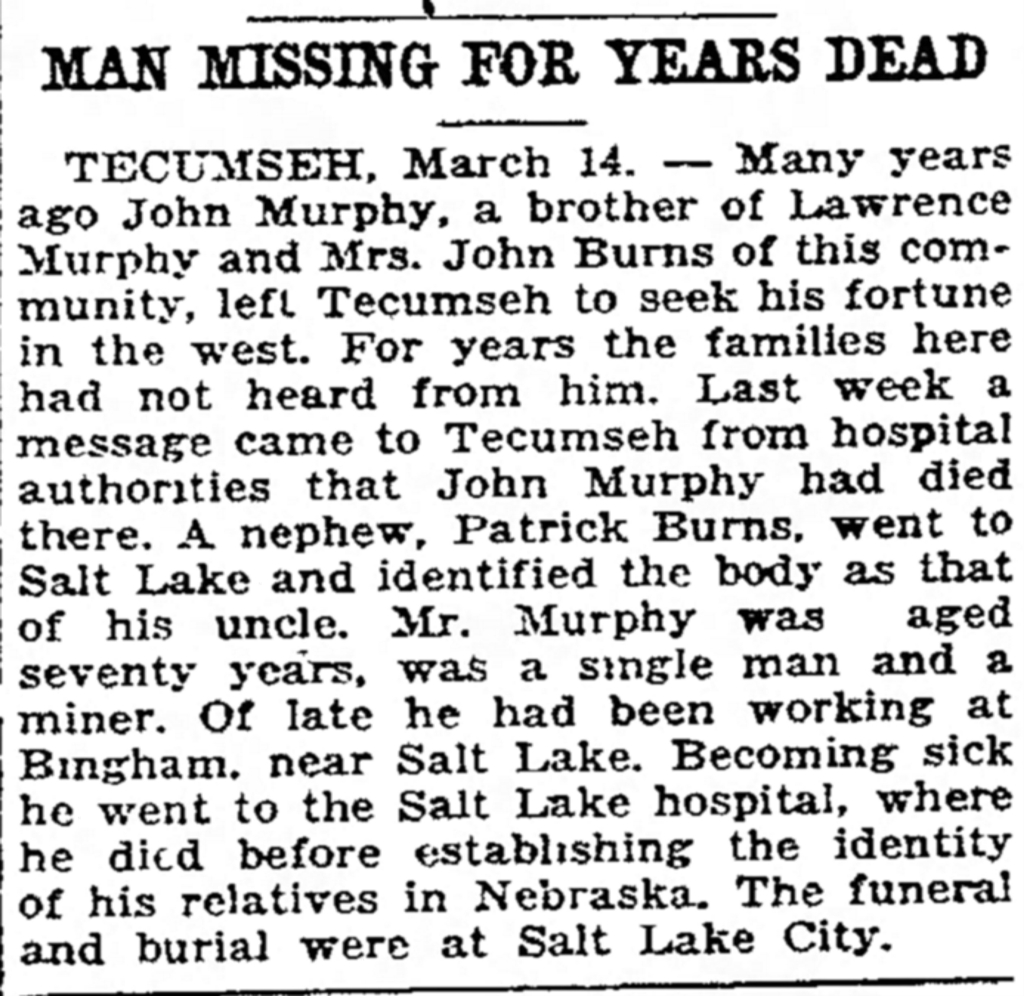
The Yankee Creek Murphys
The couple that begins the Yankee Creek Murphy line in Nebraska is James Jospeh Murphy and Eleanor Kiely. Some mystery still surrounds who James was, where he came from, and how he is connected to the other Murphy families in the Tecumseh area.
James Joseph Murphy was born Aug 19, 1819 in Ireland. He married Eleanor Kiely in 1861 in Nebraska City. James was born in Co. Carlow, as stated on his headstone. We don’t know who his parents were. James died March 18, 1882.

Eleanor Kiely (also Ellen Kiley), was born in Co. Cork (most likely Millstreet) on February 22nd, 1834. She came to the US in 1857 (obit says 1847, but that’s incorrect) with her widowed mother and two sisters, Catherine and Jane (16 at the time). They settled first in Rockford, Illinois. Eleanor would have been 23.
Two years later, she moved west to Nebraska City, where in 1861 she married James. They remained in Nebraska City until 1867, when they came to Johnson Co. and homesteaded the farm that would be the family home. Her sisters remained in Rockford, Illinois – Jane married John Cannell and Catherine married __ ?. [All from obit 1913 >]
1865 State Census (Nebraska) – where are James and Eleanor?
In the 1870 US Census, 1st July, James and Ellen are living at Vesta, Johnson Co, in dwelling no. 96. James is 40, Ellen is 35. Eldest child Lawrence is 8. The land value is $2000, personal estate value $350. [>]. At No. 98, ie. very close by is William Gould, 50, born Ireland, eldest child Catherine, born Wisconsin. No wife. At No. 99 John and Mary Ann Gould, John 45, born Ireland.
In the 1880 US Census, much the same situation – living in Vesta. Here James is 60 (which is correct, per gravestone – even if the 1870 Census had him 10 years younger than he was). [>]
According to a Burns family history with an alternate version of events, James and Eleanor came to Johnson Co. in 1857 from Des Moines, IA. In the same family history extract, it is noted that she worked as a midwife and “delivered all the babies on Yankee Creek”. She farmed Yankee Creek until 1910. Eleanor died Feb 24, 1913 in Tecumseh. The couple had 7 children.
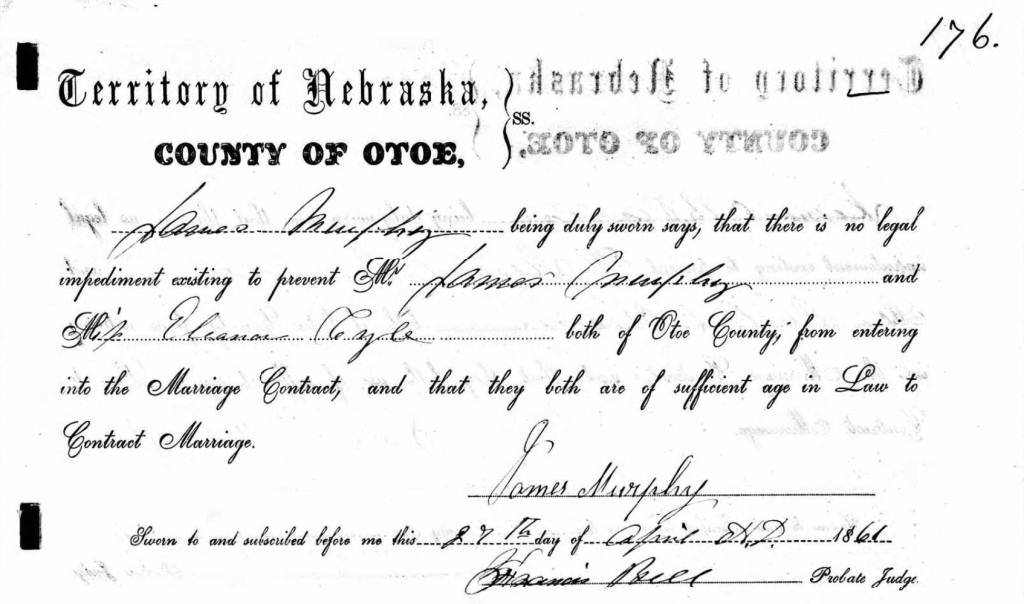

DNA matching from descendants indicates a close match between this James Joseph Murphy, and Lawrence Murphy above (but we don’t know how, yet)
Finding James Joseph Murphy – work in progress:
The facts we know:
* James was born on August 19, 1819, in Co. Carlow [headstone].
* He died March 18, 1882, in Yankee Creek, Nebraska [headstone].
* 1860 Census – where can we find James and Eleanor? Looking at the Census records for Nebraksa City In 1860, there were 182 people living here that were born in Ireland. 75 were female [>]. If Eleanor was here, it should be easy to find her. It could be Norah Murphy, aged 25, a domestic servant living in the home of Francis Bell, a Probate Judge. Her age is about right – our Eleanor was 26, and might have gone by that name, if already married. So what about James Joseph Murphy? There were 107 men born in Ireland in Nebraska city on June 1, 1860 [>]. And none of them were him.
* What about further out in Otoe county? There is a James Murphy from Ireland, 30, living out in Wyoming, Otoe. But our James was 40. [>]. Not a definite match.
* Maybe a marriage record? Might turn up here. It did! A license was issued to James and Eleanor on April 27th, 1861 – however (like some others) the marriage itself was not recorded in the book.
* Perhaps an Ancestry profile of their children will shed more light >. Starting with Pierce Murphy. No. Bridget.
* Tessa Keough: “My second great grandparents, James Joseph Murphy 352 and Ellen Kiley 353, were married on this day in 1860 in Nebraska City, Otoe, Nebraska. James’ parents were Patrick Murphy [891] and Mary McCabe [892]. Ellen’s parents were John Kiely [5717] and Catherine Driscoll [5804]. Both James and Ellen were originally from Ireland and each arrived in the USA in the 1850s. James and Ellen made their home in Vesta, Johnson, Nebraska and their homestead farm, acquired in 1867, remains in the family today. James and Ellen had seven children.”
* Tessa: “In 1867 James and Ellen homesteaded and built their home and farm (I reviewed the original paperwork at NARA Washington, DC), and the farm remains in the family today”
Ancestry profile: James Joseph Murphy, Eleanor Kiely
The English Murphys
James Murphy and Catherine Ahern were the first Murphys to settle in the Tecumseh area. We can refer to this Murphy family as “The English Murphys” – as James was born in England in 1825 to Lawrence Murphy and Ann Harley.

Lawrence Murphy served in the British Army for 22 years. He was discharged on June 3rd, 1823. His discharge certificate gives us a lot of information. He was born in 1782 in Meelnagh (Maoileanach), Oulart, Co. Wexford, and joined the Army at the age of 19 for “unlimited service”. That service would see him start as a Private, enlisting at Waterford on the 3rd of March 1801, and later becoming Corporal and finally a Sergeant.

The reason for discharge in 1823 is given as Chronic Rheumatism, contracted during the Peninsualar War in 1811.
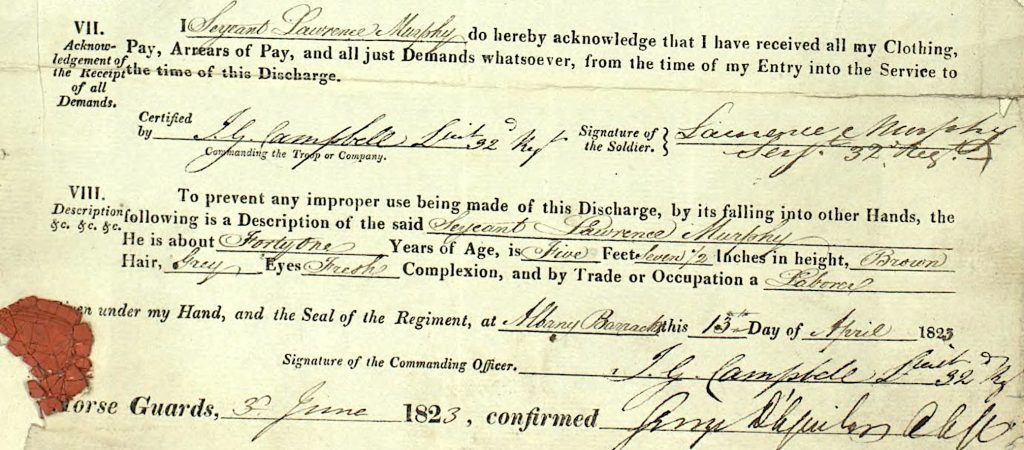
It further tells us that Lawrence Murphy was 41 years of age at the time, 5 Feet Seven 1/2 inches in height, with brown hair, grey eyes, and a “fresh complexion”.
5 years after being discharged, Lawrence joined the British Navy on September 5th, 1828 [>]. His rank was “Able Seaman”, joining the ship H.M.S. Samarang, a 28-gun, teak, Atholl-class sixth rate of the Royal Navy. She was launched at Cochin in 1822 by the East India Company.
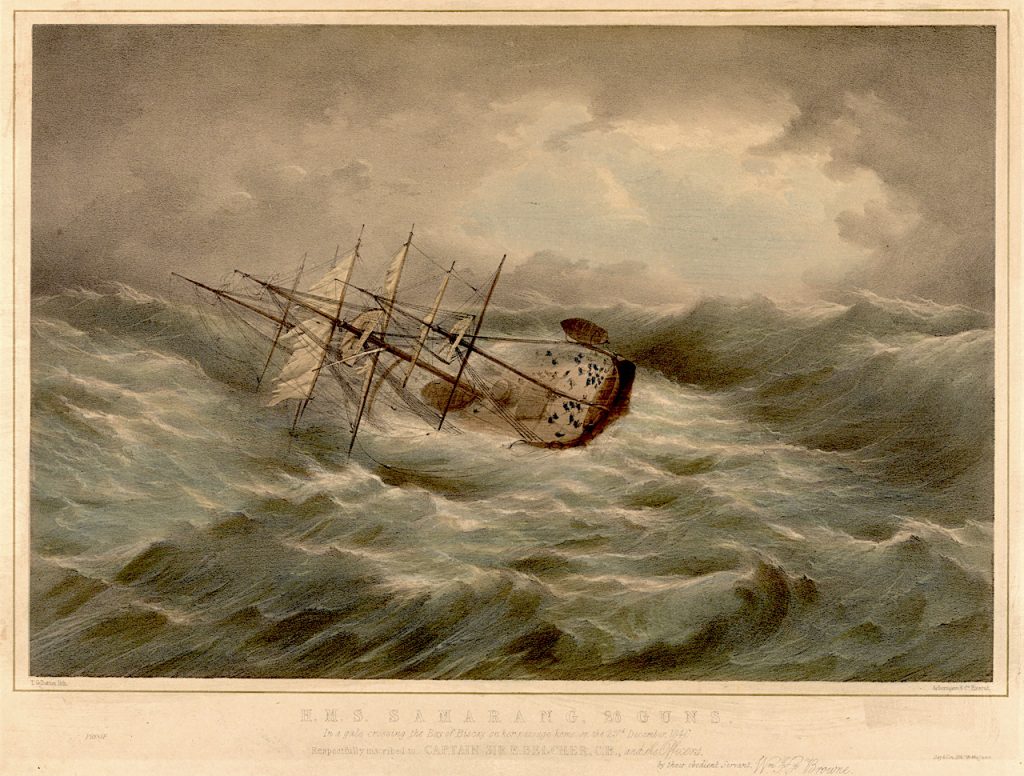
Lawrence and Elizabeths’ first child Ann Murphy was apparently born on a ship in the Irish Sea in 1816. Ann would later marry Joseph Hemming, and their daughter Mary Ann Hemming married John Gould in Iowa in 1855. Their daughter Bridget Gould married Lawrence Morrissey, son of “Uncle Ned” Morrissey. James Franklin Murphy married Mary “Mollie” Burns, daughter of Johnny Burns (Byrne) and Mary Murphy (dau of Pierce Murphy and Ann Doran).
Another daughter of Lawrence J Murphy and Ann Harley was born in 1819: Bridget. She married Asahel Strawn. His biography gives some more information: “The year 1860 saw the arrival of the Strawn family in Kansas and their settlement in Crawford County. They had come a long distance, traveling from Illinois in a covered wagon and one can well believe that the new home, although a primitive one, presented a pleasant sight to the weary travelers. Asahel Strawn and his wife, Bridget (Murphey) Strawn, with their
live children, George W., William A., Betsey AnI, Mahala and Julia, made up the party. Asakel Strawn was born in Canada, a son of Joab Strawn, who was a descendant of William Penn and a Quaker. He went to Canada, perhaps from Pennsylvania, and there became the father of eight sons, each one of these being given a Biblical name and seven grew to maturity. In all probability it would have pleased him had his son
Asahel selected a Quakeress for his bride, but it is not known that he objected to the admirable selection the son made. It was otherwise, however with Laurence and Elizabeth (Harley) Murphey, who, being devout Catholics, could not consent that their daughter Elizabeth should marry outside the church.
Therefore the young people had no other recourse than to run away and marry and this union proved one of domesatic happiness. The father of Mrs. Strawn was from County Wexford, Ireland, and was a soldier in the British army and fought at the battle of Waterloo. After he had passed the age for military duty he was given a money pension with which he came to Canada. The graves of Laurence Murphey and wife may be seen in the cemetery of a little village near Freeport, Illinois.” [>]
Another son was Samuel Murphy. His biography is included in the history of Black Hawk County, Iowa (1896) >. “SAMUEL MURPHY was born in Staffordshire, England, September 6, 1823, a son of Lawrence and Elizabeth (Harley) Murphy. When he was three years old his parents moved to County Wexford, Ireland, and at the age of eight years he came with them to America. They first settled near St. Thomas, Canada, residing there till the spring of 1840, when they removed to Winnebago County, Illinois, and a year later removed to Stephenson County, where the father died in 1849, aged sixty-five years, his mother also dying in that county. The father spent about thirty years of his life in the English army, three years of that time being in the navy. He was the father of four sons and two daughters, who accompanied him to America. Samuel Murphy has supported himself since he was ten years old, at first working for the farmers in his neighborhood. In 1848 he bought a farm of sixty-eight acres in DeKalb County, Illinois, paying for the same on time, living there till 1854, when he sold his land and came, in May of that year, to Black Hawk County, Iowa. He at once settled on the place where he now resides, which at that time had no improvements. He lived in a small log house, 14 x 16 feet in dimension, till 1856, when he built a small house in which he lived about twelve years. In 1877 he erected a large frame house at a cost of $1,500, which was burned down in 1877, and in the fall of the same year he built his present residence. The small log house, 12 x 12 feet, at first used as a stable, has now given place to a substantial barn, and the other farm buildings are good. He has now a well-cultivated farm of 125 acres, eighty acres being on section 1, and forty-five on section 2, Washington Township. Mr. Murphy was married September 20, 1846, to Parnel Abiah Cory, a daughter of Samuel and Parnel (Bockaway) Cory, natives of Vermont, where they were married and married. Shortly after their marriage they removed to Madison County, Indiana, where Mrs. Murphy was born, February 22, 1826, and when she was eight years old her parents settled in Kane County, Illinois. They subsequently moved to Kirkland, De Kalb County, Illinois, where Mrs. Murphy lived till her marriage, her parents residing there till their death. Her mother died in the fall of 1853, at the age of sixty-four years. Her father was one of the first settlers of Kane County, and did much toward helping new settlers who came after him. He was a prominent man in De Kalb County, and was an extensive dealer.”
In 1851 James Murphy and Catherine Ahern moved their family to Waterloo, Iowa, and then in 1856 to Johnson Co., Nebraska where they became some of the first settlers on Yankee Creek. James Murphy was born 14 Oct 1825 in Six Ashes, England. In the 1850 US Census [>], James and Catherine are living in Franklin township, south of Rockford, IL. Son Lawrence is 2, and Charles is 1. Catherine (aged 25) was born in Ireland, but James (aged 23) in England. Also living with them is Thomas Murphy, aged 21 and born in Ireland (=> b. 1829) – a brother of James. Two houses away are another brother Samuel Murphy, 26, born England and Parnel A. Murphy (female, born Indiana), and two houses away again are another brother Peter Murphy, 28 and Mary Anne Murphy. The parents of James, Thomas, Samuel, and Peter are Lawrence James Murphy (who served 30 years in the British Army) and Ann Harley.
James Murphy and Catherine Ahern had the following children:
- Lawrence Murphy
- Charles Murphy
- Elizabeth Murphy
- Mary Murphy
- Margaret Murphy
- Catherine Murphy
This US Census entry from 1860 shows the family living in Johnson Co. [>]

Lawrence Murphy was born at Freeport, IL on 27 Jul 1848 and died on Christmas Day, 1920. He moved back to Iowa in 1862, per the obit below. Lawrence married Mary Craney of Hamburg, Iowa in Nebraska City in 1876.
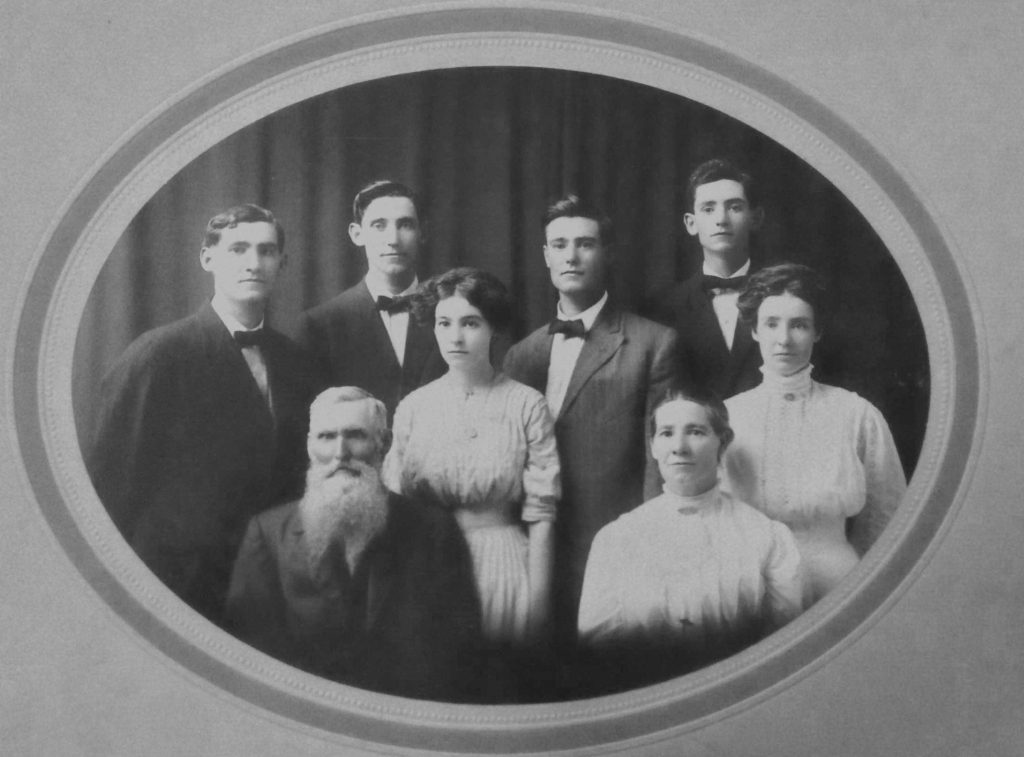
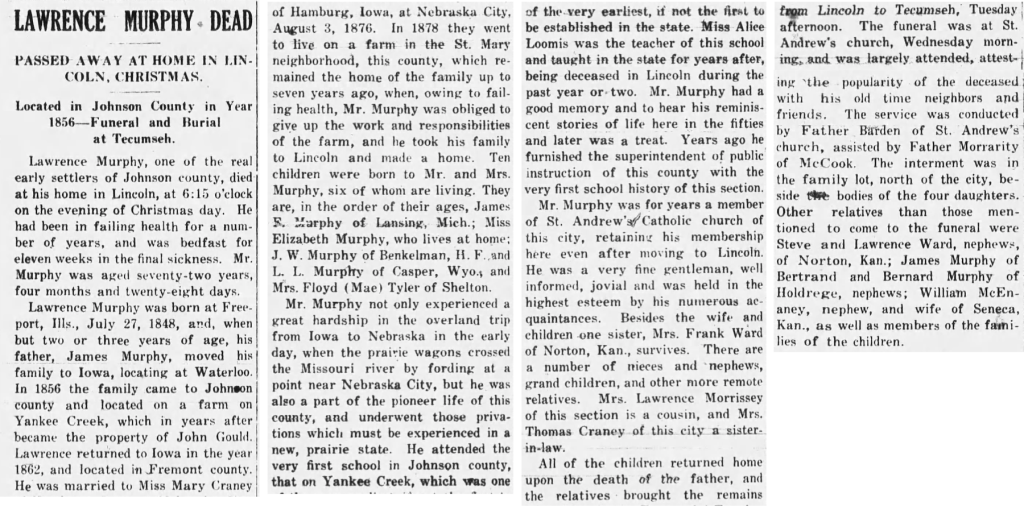

Mrs. Lawrence Morrissey (aka Bridget Gould) is mentioned in the obituary for Lawrence Murphy (above) as a “cousin” of Lawrence Murphy. Her husband’s parents are Edward Morrissey, born St. Mullins in 1817 or 1818, and Mary Murphy, born St. Mullins on 24 Feb, 1819. Edward Morrissey came to the US in 1849, first to Bennington, VT. There he married Mary Murphy in 1853. In 1857 the family moved west to Elkhart, IL, and in 1868 moved further west to Johnson Co., NE. There they had 5 children including Lawrence Morrissey. [source: Obit. Edward Morrissey, Tecumseh Chieftain, 19 Mar 1904 >]
The Kavanagh’s of Crab Orchard
James D. Kavanagh and Catherine Anna Morrissey are another couple from St. Mullins who emigrated to Nebraska. They emigrated to Vermont in 1850.
Origins in St. Mullins: life in Ireland before they left
As outlined above, on Jan 6, 1853, three St. Mullins men made their US Naturalisation: Laurence Shaughnessy, Edward Morrissey, and James Kavanagh. What can we learn about their life in St. Mullins before they left, and how did they relate to the Murphy family, our ancestors?
Laurence Shaughnessy
Edward Morrissey (known as Ned, also Uncle Ned) was born in St. Mullins in 1817 or 1818. He emigrated to the US in 1849. Settled first in Bennington, Vermont along with Laurence Shaughnessy and James Kavanagh. Married Mary Murphy in Bennington in 1853.
- Birth: various dates mentioned: 1817/18, 1820, 1822. Baptism not found
- Parents not found
- Siblings not known
- Marriage record to be found
- 1849: Emigration. Any ship record to show with James Kavanagh? (both 3 years in VT at Nat.)
- Wife Mary Murphy: born 24 Feb 1819 – in St. Mullins?
- 1st son Lawrence Edward Morrissey b. 1853 Bennington VT >
- 2nd son “Owen Jerome Morrissey” > – very specific name. Links back?
- New children found: in St. Mullins, Ballyknock – Mogue (1847) and Mary (1850).
Owen Moresy and Joanne (Joney) Connors of Ballyknock:
Owen Morisy and Joney Connors married March 17th, 1806 at Drummin, St. Mullins. Witnesses: James Murphy & John Morisy.
Children:
- Patrick Morrissey – born “c. 1805”, married Peggy Callaghan (see below)
- Mary Morisy born 1807 at Ballyknockvicar > [Sponsor: James Murphy]
- Catherine Morisy bapt 07-Jan-1808 > (mother Joney not Fancy, incorrect transcription). Could this be Kate Kavanagh, and sister of Edward Morrissey, etc.??
- Mary Moresy born 1810 (SIC, 2nd with same name). > [Sponsor: John Morisy].
- James Moresy born 1813 > [Sponsor: Laurence Morrissy].
- and mayyyybe … Edward Morrissey c. 1817?
The name Owen seems extremely rare around this time and location. These may well be the parents of Ned Morrissey. His first daughter was named Johanna (matches mothers name here). Second son named Owen (matches fathers name) (plus Jerome for Joney??). The location of Ballyknock also fits the connection to the Murphy’s (who were from Ballyknock).
- Any further children?
- Land records?
- Owen DOB c. 1786
Tithe Aplotment Books of 1834 > list two Morrisseys: John Morrisy and Laurence Morrisy in Ballyknock (along with Simon Shaughnessy, Widow Murphy, Michael Murphy, Dudley Kavanagh, Matthew Brennan), of a total of 28 people named in the townland.
Parish Church records (St. Mullins) show a good number of Morrissey’s in Marley, but only one couple in Ballyknock between 1800-1830: the above Owen Morrissey and Joney Conors. One exception: Laurence Morisy b. 07-Oct-1807 > to John Morisy and Anne NN at Ballyknock.
Owen Morrissey born 1848 to James Morrissey and Mary Cadagan at Drumman >. Same place that Owen Morrissey married Joney Connors. Could be Owen’s son James. Sibling Catherine Morrissey bapt. 1845 >
If we can show that James Kavanagh was also from Ballyknock, it starts to line up.
R>> Mogue Morrissey bapt. 13 June 1847 at Ballyknock > Parents Ned Morrissey and Mary Murphy. Noted as “illegitimate” – so Ned and Mary were not married. Also witnesses: James Kavanagh & Catherine Murphy.
Mary Morrissey bapt. 04 Aug 1850 at Ballyknock > Parents Ned Morrissey and Mary Murphy.
This does mean that we now know Ned Morrissey’s wife Mary Murphy is from Ballyknock, and that increases the likelihood of her being a close relative of Pierce Murphy & Ann Doran. Perhaps a sister of Pierce. A marriage record from 1853 would be helpful.
Patrick Morrissey and Margaret (Peggy) Callaghan of Ballyknock
Pat died (from consumption) 22-Mar-1865 aged 60 in Stamford, Bennington, Vermont >. On death cert, parents listed as Owen Morrissey and “Joan“. Suggests DOB 1805, though the “60” may be a rough guess. Since we know he was from Ballyknock, this make it almost certain Owen Morrissey & Joney Connors are his parents. House book in Ballyknock >, next door to Pierce Murphy (my great-great-grandfather). Probate papers for Patrick Morrissey Oct 1865 >, further below.
Children:
- Patrick Morrissey bap. 18-Mar-1840 at Ballyknock. Sponsors: Honor Callahan. Married Catherine Collins. Deputy Sheriff of Bennington County for 35 years. Came as a young boy. Served in Civil War, Vermont Cavalry >
- Owen Morrissey b. 1841. Married Mary O’Connor. Lived in Bennington. 1880 Census shows mother Margaret aged 75, living with Owen >.
- Lawrence Edward Morrissey bap. 04-Aug-1844 at Ballyknock (confirmed >). Sponsors John Morrissey and Mary Callaghan >. Lawrence Ed. Morrissey emigrated to the US between 1850-1854 > , married Hannah McHugh 09-Oct-1875 at Franklin, Norfolk Co., Massachusetts. Son Owen Henry Morrissey (an Embalmer by profession), passport app. > states father (Lawrence Edward) emigrated in 1850, was naturalized in Bennington Vermont. Again points to a mass St. Mullins emigration around 1850.
- Catherine Morrissey bapt. 20-Sep-1846 at Ballyknock >. Sponsor: Owen Callaghan, Catherine Callaghan.
- James Morrissey bap. 08-Jul-1849 at Ballyknock >. Married Margaret McHugh 18-Apr-1881 at Franklin.
Patrick died in 1865 leaving a homestead, “consisting of 150 acres situated in Stamford, and known as the Yaw Farm (?), a widows interest in the same and two minor children, Lawrence aged 20 years and James aged 15 years”.

We can also see a list of his animals and farm equipment: 1 horse worth $100, a 4 year old colt worth $115, and 73 sheep worth $401.50 – the whole amount of personal posessions added up to $3000, a tidy sum for 1865 and a man who had left the famine ravaged homeland of Ireland.

- Marriage of Patrick and Margaret?
- Some records show Patrick Morrissey as dying in the US ?
Morrissey in Vermont
Who was the first to arrive in Bennington, VT?
Patrick Morrissey – from Ballyknock. Son of Owen Morrissey & Joney Connors. Last child in ireland James Morrissey bap. 08-Jul-1849
Edward Morrissey – from Ballyknock. Mary Morrissey bapt. 04 Aug 1850 at Ballyknock > Parents Ned Morrissey and Mary Murphy. Could have left as early as December 1849, but no earlier.
James Kavanagh
St. Mullins Graveyard
Two early gravestones, noted by Col. Vigors c. 1890, who visited graveyards and listed the stones [>]:
Lawrence MURPHY 1771 aged 54
Pierce MURPHY, May ye 7th, 1730 aged 30 years” [A flat stone]
It’s interesting to note this name combination – Lawrence and Pierce, which continues in the Murphy family right through to the 1900’s.
Unsovled mysteries – 2023
- How are the three Murphy families related to each other?
The catch is that of the three Murphy families above, there is no clear link between them which indicates how they are related. They seem to be, and there is even DNA evidence that confirms that (see below), but we don’t know how! Do you?
Newspaper articles
Tecumseh Chieftain, 20 Mar 1920 [>]: “John Murphy, son of Mrs. James Murphy, departed for his claim near Casper, Wyo., Monday. His post office will be Moneta. Mr. Murphy has a half-section of this land; and James Morrissey, son of. Mr. and Mrs. Lawrence Morrissey has a half-section adjoining it. Mr. Morrissey is firing on a Burlington train, with a run out of Casper, at this time. He will leave the railroad work and locate on his claim soon. Mr. Murphy was feeling quite hopeful over the prospects of oil in the section of his claim. Four miles away there are flowing wells.“
This is John Pierce Murphy, b. 1889 son of James Murphy & Mary Reddin. James Morrissey, son of Lawrence Morrissey is either a relative or a friend. In the obit. for Lawrence Murphy (1920) of Yankee Creek above, “Mrs. Lawrence Morrissey of this section (Lincoln) is a cousin”. Also. “H.F. and L.L. Murphy of Casper, Wyoming” – Hugh Felix and Lawrence Leo. There has to be a link from this family to the children of Pierce Murphy (1806) and Ann Doran, but it’s not yet clear how.
2. Who was James Joseph Murphy ??
Who was James Joseph Murphy, the husband of Eleanor Kiely?
- Homestead records?
- Can we find the marriage record to Ellen Keily that might tell us more?
- Tessa Keough: “James and Eleanor were married [MRIN: 10] on 28 Apr 1861 in Tecumseh, Johnson, Nebraska, USA.”
- Burns doc: “James Murphy and Eleanor Kiley were married on 28 Apr 1861 in Springfield, Sangamon, Illinois”
- Obit: they were married in 1860 in Nebraska City
- Which one is correct?
- Burns doc suggests he is the brother of Pierce Murphy (x Ann Doran). Why is this not true?
3. More Unknowns – as of January 2022
Who was Mary Murphy, wife of Ned Morrissey?
- She was born in Co. Carlow 24 Feb 1819. She married Ned Morrissey in Vermont in 1850, so was a very early emigrant to the US.
James Murphy of the 1860 Middletown, IL census – who was he?
- James and Mary (nee Daly) Murphy, with children Thomas (2) and Johanna (1). James is a farmer, net worth $800, born Ireland, aged 25 (b. 1835). Mary aged 21 (> b. 1839). Living very close to Kavanagh’s. [Who is this couple? – looks like this James Murphy is from Wexford [>]. Children ended up in Kansas. Johanna later married a John Burns, son of John Burns and Catherine Maher. James died in Cherokee, Kansas.]
- Who did Mary Murphy (daughter of Pierce Murphy and Ann Doran) stay with on arrival in the US in Elkhart?
- Who is John James Murphy born 15 Sep 1837 at Ballyknock? [>]
4. DNA surprises!
As more and more of us do DNA tests, it can help to fill in the blanks and answer some long-unsolved questions. I’m going to share here some things I’m looking at:
DNA Match: Dan D
- July 2022: Surprised to see a DNA link for both myself and my Uncle John to Dan – who is a great-grandson of Ned Morrissey mentioned above. Ned married Mary Murphy, and this looks like our common ancestor. John and Dan share 29 cM across 2 segments, which is a strong enough match.
- That suggests that Mary Murphy is likely closely related to the early Murphy’s in our family, for example our great-grandather Pierce Murphy, b. 1806 in Ballyknock, husband of Ann Doran.
- So … who was this Mary Murphy?
DNA Match: Taylor L
- July 2022: A really intriguing DNA match is with Taylor. Similar to above with Dan, my uncle and I share up to 34cM across 4 segments. Taylor’s great-great-grandfather was James Joseph Murphy, b. 1819 in Co. Carlow (likely St. Mullins, we think), husband of Eleanor Kiely.
- Again, who was James Joseph Murphy?
Can we triangulate?
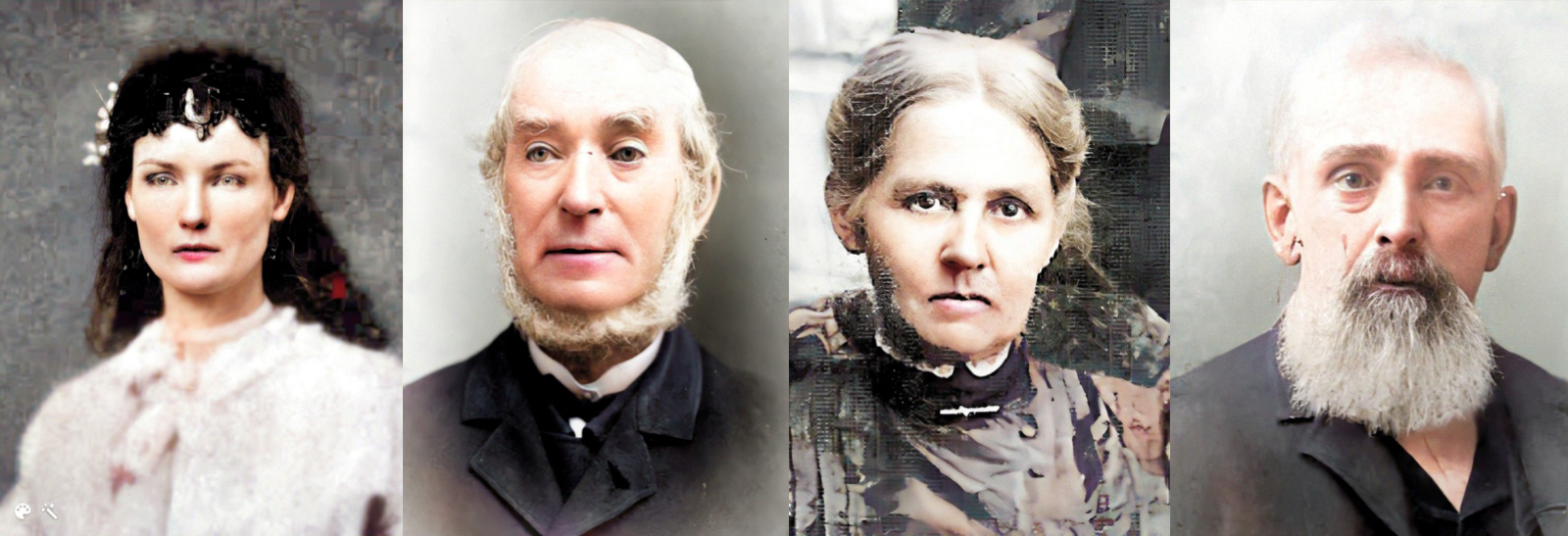
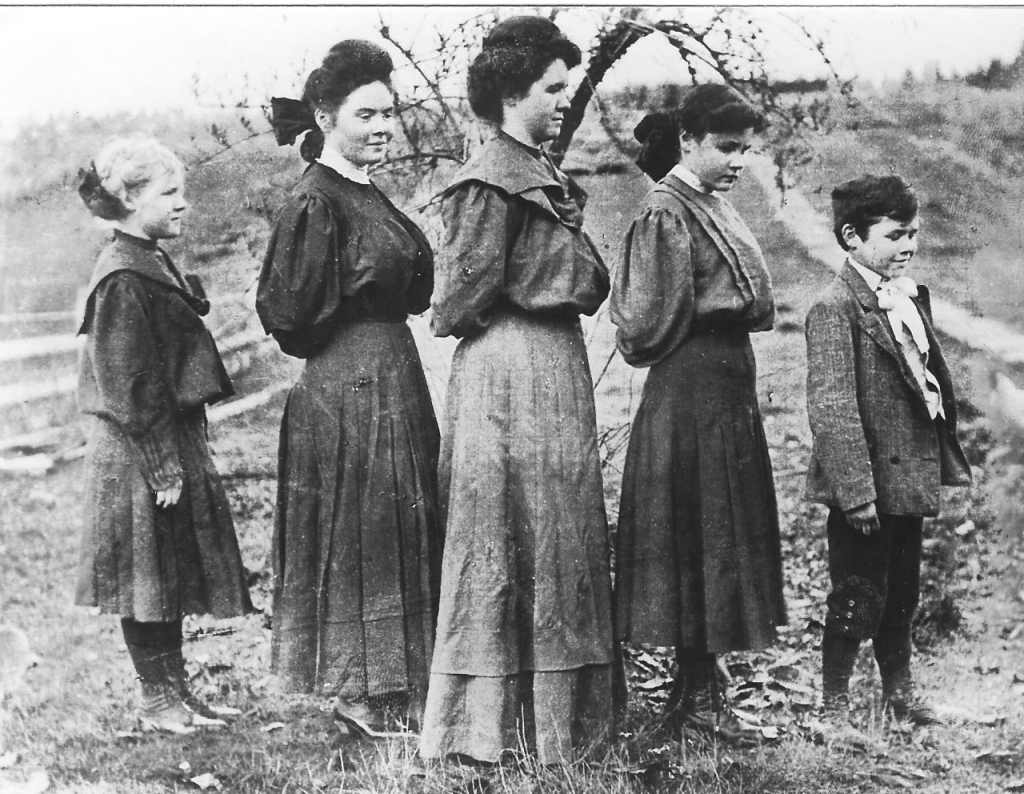
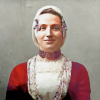
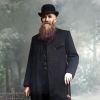
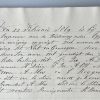
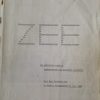

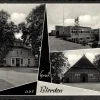
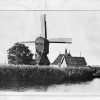

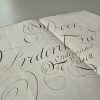
This is amazing information. I’m having a ball reading through it.
Thanks Stephanie, great to hear! I wonder if the Brennan’s here are related to you?
Thanks for this! I am descended from Lawrence and Bridget Morrissey. The youngest of their children, Margaret was my grandmother, the mother of my father James Lawrence Tucker of Tecumseh.
My lineage leads back to Ned Morrissey and Mary Murphy.
Daniel Francis O’Donnell – John Lawrence O’Donnell- Anne Martha Morrissey- James Henry Morrissey – Ned Morrissey
I have researched the Morrissey’s and Murphy’s from both Nebraska and County Carlow. I have not made a connection beyond Ned Morrissey and Mary Murphy.
DNA testing has not showed a link up to this point.
Would it be possible to purchase a printed copy of “The Trail from Tecumseh from St Mullins?
Thanks for this amazing portrait of the past. It is very interesting.
Hi Daniel,
Great to hear from you! Indeed this page is a work in progress, perhaps in the future I can create a printed copy of this – more research to come first. Still some mysteries to solve around the key figures – Ned Morrissey, Mary Murphy, James Murphy. Hoping that some more DNA research might show a link. Keep in touch!
This was fascinating to read!! Thanks for filling in a few blanks for me! I was born and raised in Tecumseh, my parents still live there. I come from Edward Morrissey to Lawrence Morrissey to William Morrissey to Charles Morrissey to Spencer Morrissey to me, Nathan Morrissey.
God BLESS you for all of the work that you have done! I descend from James and Catherine Ahern Murphy, who are buried in Tecumseh, Nebraska. In fact, I just visited their graves a few days ago, traveling from my home in Michigan. Neither you and I, nor you and my mother (Linda Brunson) seem to be a DNA match. That doesn’t mean that our families aren’t connected, of course. It could be that we’re very distant cousins.
My Murphy lineage goes Laurence and Ann Harley Murphy to James and Catherine Ahern Murphy, to their son Charles Gade Murphy, to his daughter, Nora Valenchia Murphy Major, to one of her sons (can’t be sure which) to my mother.
I’m fascinated by my covered wagon, pioneer ancestors and your information has been very insightful. Thank you!
My grandmother who I did not meet was Marguerite Murphy. She married Dewey Webb and lived in Tecumseh, NE until their deaths. Marguerite Murphy’s mother (great grandmother who I met), was Millie Murphy, daughter of Piere (not sure of spelling), who was the son of Lawrence Murphy and Ann Doran. (Balyknock Murphy’s) It sounds like I may have a lot of distant cousins still in NE. I currently live in AZ. I am going to Ireland at the end of June and would love to meet anyone who is still there and related to me.
You have done a lot of research and this is so interesting. If you could give me any further information of any one that still lives in Ireland it would be appreciated.
Thank You!
Kim Biggs kimmarie626@gmail.com